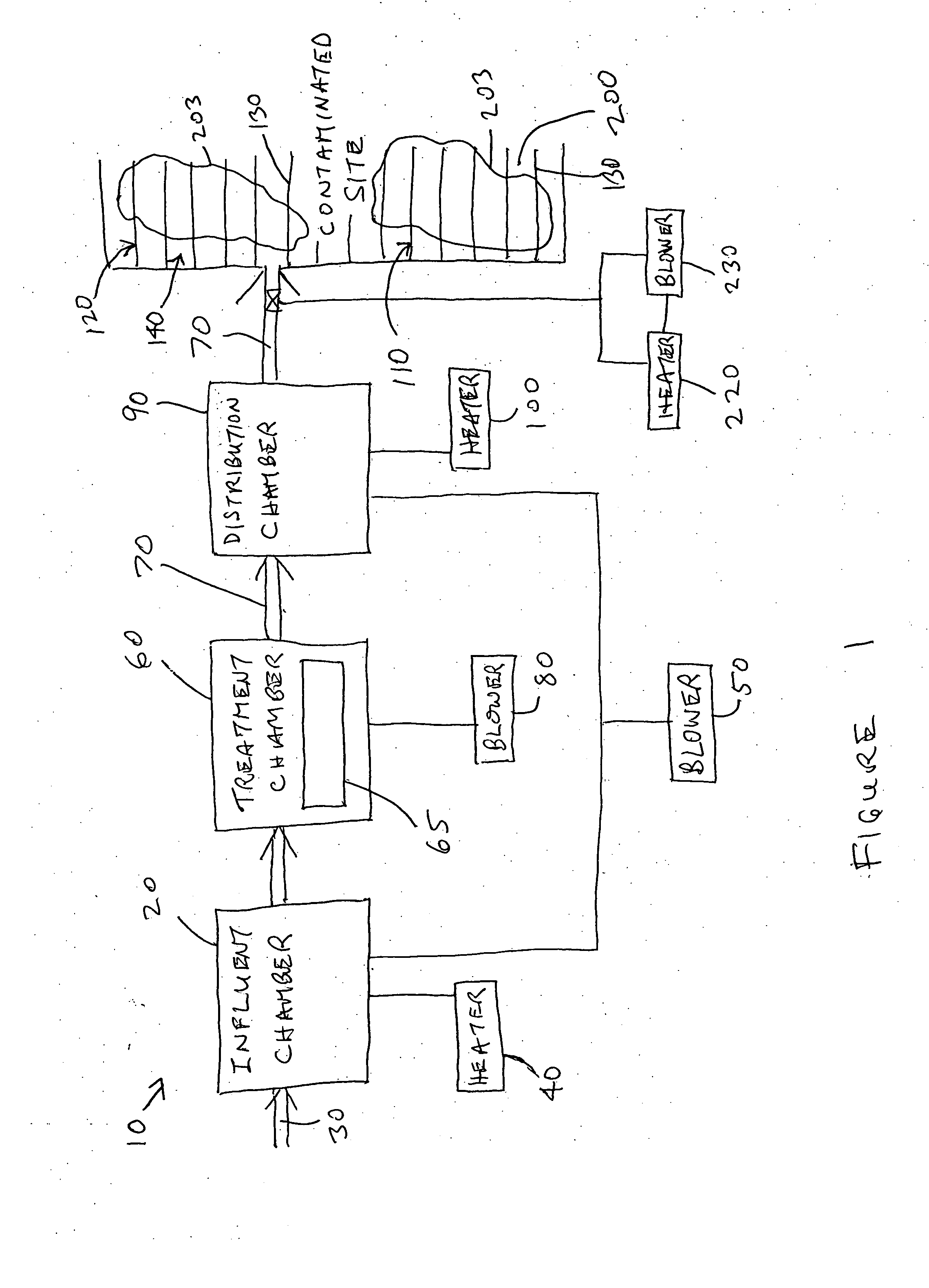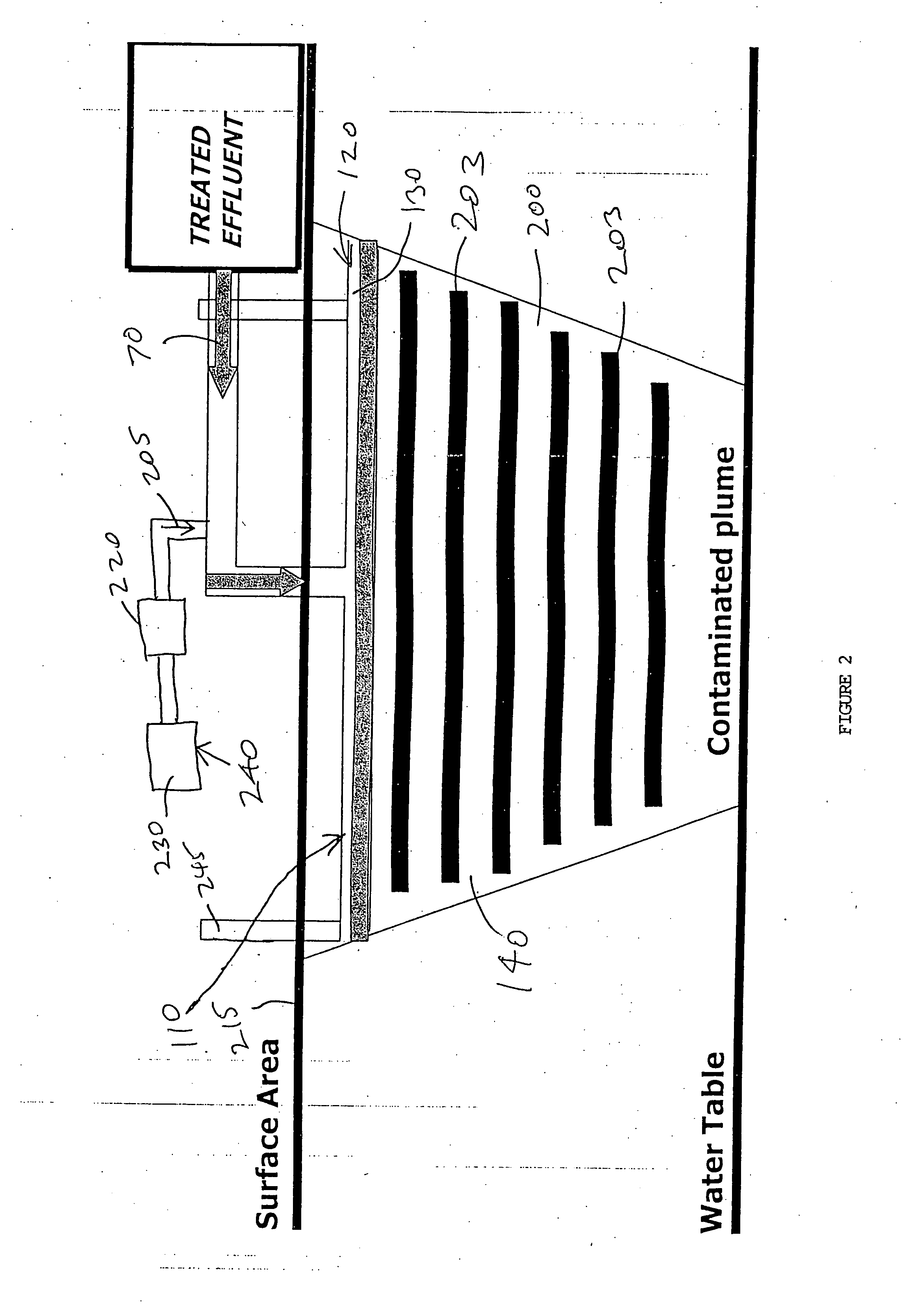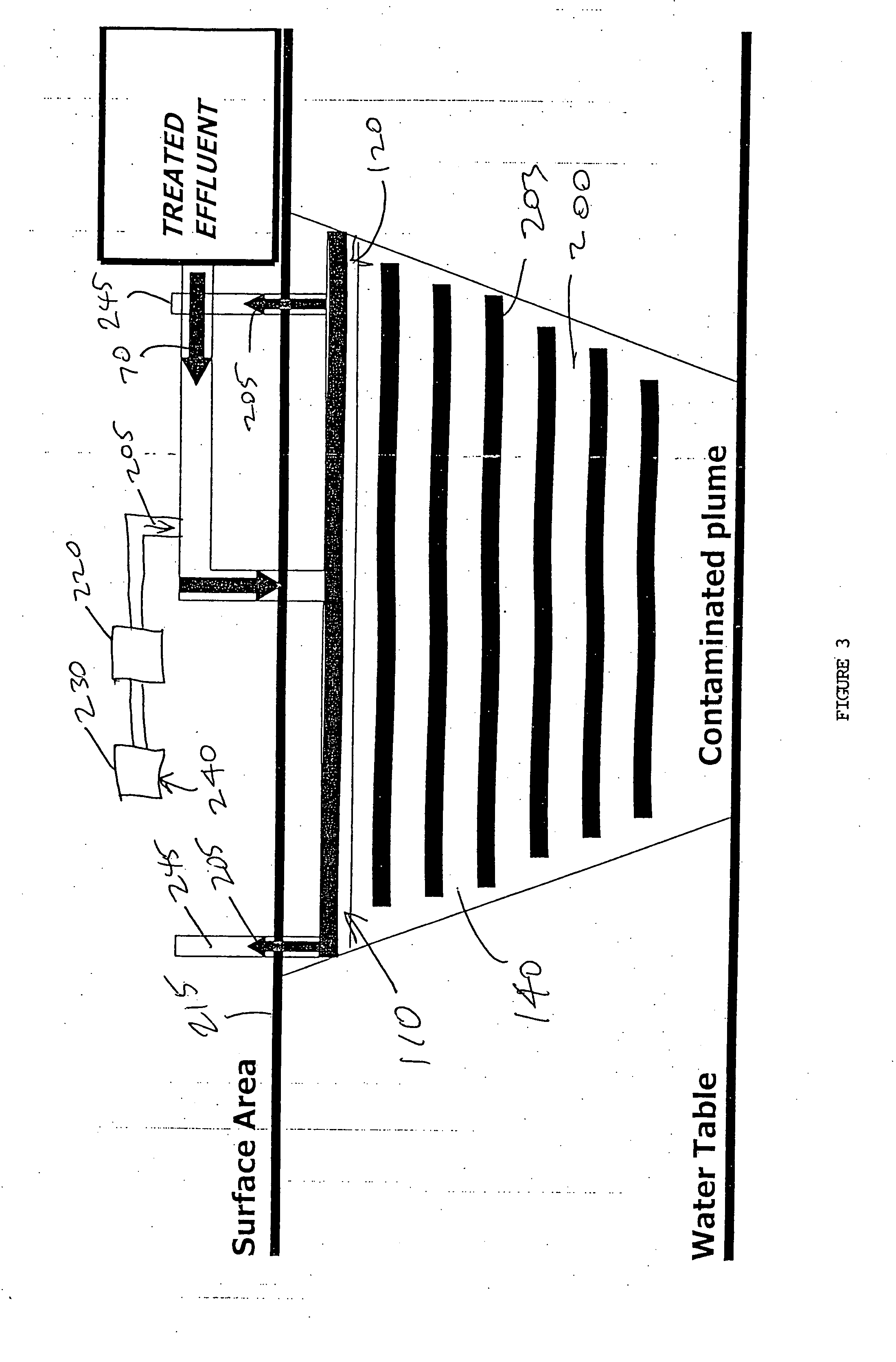Method, process, apparatus, and product for remediation of hydrocarbon contamination
- Summary
- Abstract
- Description
- Claims
- Application Information
AI Technical Summary
Benefits of technology
Problems solved by technology
Method used
Image
Examples
example 1
Simulated In situ, Cold Climate Conditions
[0082] During the period from Sep. 23, 2003 to Feb. 6, 2004 (137 days), test results were recorded for a remediation process of the present invention applied in situ to soil contaminated with diesel fuel.
[0083] Treated sewage effluent (being Residential Sewage) acquired from a residential lift station was applied in amounts of 6 liters daily to four contaminated containers for 59 days. Water was applied in amounts of 6 liters daily to four equally contaminated containers for 59 days. Two additional equally contaminated containers were left untouched for control purposes. The soil temperature was maintained at 6-10° C. The contaminated soil in the containers was created by mixing 199 litres of diesel fuel with 12 m3 of pit run gravel having a moisture content ranging from 0.7 to 4.6% and dividing the contaminated soil into ten equal batches of 1.2 m3 each and placing one batch in each of ten equally sized containers.
[0084] After 59 days of...
PUM
 Login to view more
Login to view more Abstract
Description
Claims
Application Information
 Login to view more
Login to view more - R&D Engineer
- R&D Manager
- IP Professional
- Industry Leading Data Capabilities
- Powerful AI technology
- Patent DNA Extraction
Browse by: Latest US Patents, China's latest patents, Technical Efficacy Thesaurus, Application Domain, Technology Topic.
© 2024 PatSnap. All rights reserved.Legal|Privacy policy|Modern Slavery Act Transparency Statement|Sitemap



